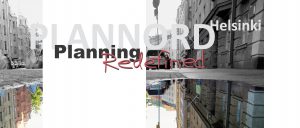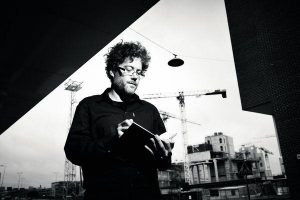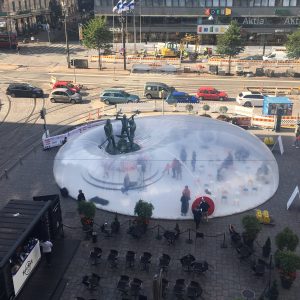Out now: the latest issue of the Finnish Journal of Urban Studies, themed “Urban Humanities” (2016/2). Articles ao. on narrative planning theory, linguistic urban history, literary archaeology.

Visiting editors in chief Lieven Ameel, Anja Kervanto Nevanlinna & Samu Nyström.
Below, a link to the introduction:
http://www.yss.fi/journal/new-approaches-in-urban-humanities/
The issue also features my article ”Narrative Mapping and Polyphony in Urban Planning.”
From the editorial:
Towards Urban Humanities
“The last decades have seen a number of paradigm shifts – the spatial turn; the linguistic and cultural turn – that aimed at bringing human experience, the language in which it is couched, and its cultural and historical contextualisation, into disciplines that have been traditionally more preoccupied with quantitative data and methods. Some of these paradigm shifts have resulted in the appearance of well-established sub-disciplines, such as cultural or humanistic geography. As we have entered the “urban century”, following a century of continuous, dominating urban growth, has it become time for a renewed turn towards more culturally, linguistically and historically oriented research of the urban condition – time for a new kind of urban humanities? A renewed urban humanities could bring crucial and refreshing perspectives to sometimes elusiva data, as well as new ways to include and study immaterial layers of meaning in the context of conflict, inequality, and exclusion. It could enable addressing some of the most important challenges for current urban planning and policy: how to account for radically different kinds of knowledge and place-based information, from quantitative and objective data (soil, construction material) to more sociologically, historically, or culturally oriented experiential information (see Lapintie 2003; Sandercock 2010)?
A renewed urban humanities means also widening the scope of available sources and methods in a manner that is explicitly cross-disciplinary. One particularly beneficial element of urban humanities is the way in which it could address the call for more experiential knowledge: not questions of what, where, and how much, but questions of how and why. For example, how are plans for the future couched in persuasive terms, using rhetoric strategies (Ameel in this volume), how do people attach meaning to place via place-naming strategies (Ainiala et al. in this volume), why do we find certain kinds of memory activation in specific historial periods (Seppälä in this volume), and how do literary and other narratives reflect historical complexities (Finch, Kekäläinen in this volume)? Historical studies can bring much-needed temporal and analytical depth to present-day narratives of cities in conflict (see e.g. Nyström 2013). European ethnography, art history and theatre studies add further dimensions to our understanding of the complex layers of meaning inherent to the urban condition, and the extent to which cities remain always cities of words, of shared, shaped and contested memories and identities.
Highlighting these aspects of the urban condition could attune urban policymakers as well as their recipients – city’s inhabitants – to the extent to which urban policy and planning entails negotiating between often competing visions. The present volume want to present diverse and sometimes unespected kinds of data, with the explicit aim to make these available for scholars from outside the humanities.” (Ameel, Kervanto Nevanlinna & Nyström 2016: 5-6)
Content:






